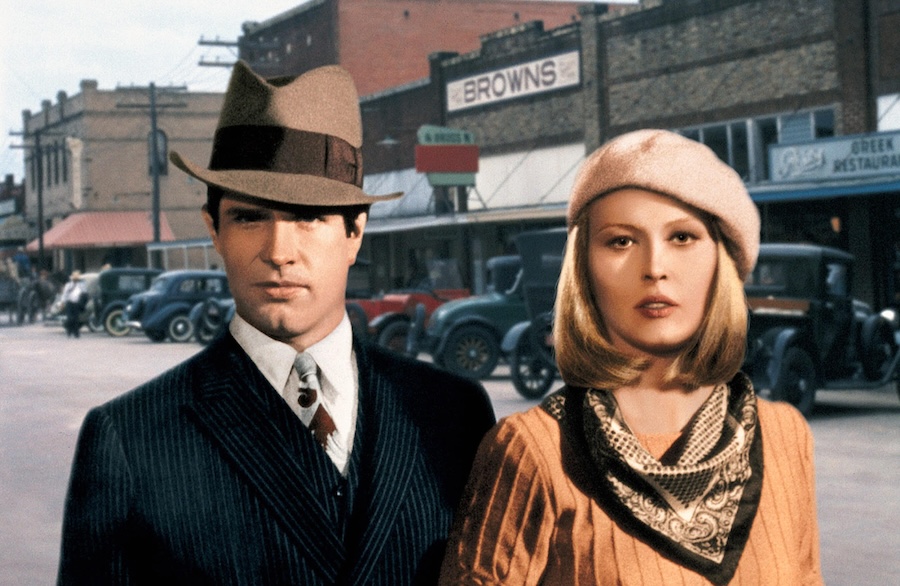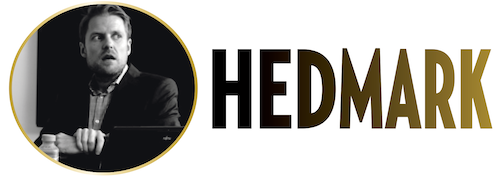
THEY’RE YOUNG… THEY’RE IN LOVE… AND THEY KILL PEOPLE.

The term most commonly used to describe Bonnie and Clyde (1967) is probably “landmark film”. It may seem a little odd to begin this review by focusing on the movie’s effect on film criticism, but it’s one interesting part of a crucial whole. When it opened, Arthur Penn’s movie divided the critics. Those who were against it ended up looking like fools and the veteran Bosley Crowther even lost his New York Times position. Those who had supported the film looked like sages (both Roger Ebert and Pauline Kael launched their careers thanks to their positive reviews). Out with the old, in with the new.
This was also true for Hollywood as a whole where Bonnie and Clyde is considered a watershed moment, the film that ushered in a new era of movies that were more in tune with modern audiences.
Dreaming of an adventurous life
This is the story of two of the most notorious (and romanticized) criminals in American history. In the days of the Great Depression, Bonnie Parker (Faye Dunaway) happens to spot Clyde Barrow (Warren Beatty) as he tries to steal her mother’s car. Far from intimidated, Bonnie has always dreamt of an adventurous life and decides to give up her waitressing job in favor of hanging out with the charismatic criminal. Soon they’ve formed a whole bank-robbing gang, consisting of Clyde’s brother (Gene Hackman) and his wife Blanche (Estelle Parsons), as well as a gas-station attendant, C.W. Moss (Michael J. Pollard). Everything goes fine until the day when Clyde shoots a bank manager in the face and the authorities decide to turn their focus on the gang.
Ugly and true violence
No one involved with the production says they knew they were making a game-changing masterpiece, but the filmmakers were definitely not watching old American gangster movies for inspiration; rather, they looked to France. As fans of the New Wave cinema, the filmmakers wanted to create a movie that seemed naturalistic and true but still honored the fact that it was a film. As a result, cinematographer Burnett Guffey shot scenes in Texas that look earthy and relevant (especially in the depiction of Depression-era suffering and regular folks, such as Bonnie’s family in one particularly good sequence where her mother sees straight through Clyde)… but we’re constantly reminded of the fact that we’re watching a movie because of stylistic choices.
Many critics were turned off, but others were correct in pointing out that this is what violence really looks like; it’s ugly and true.
And then there’s the violence. The final scene where Bonnie and Clyde meet their fate has become legendary not only for the rapid-fire editing, but also the blood-soaked approach to depicting death on film. Many critics were turned off, but others were correct in pointing out that this is what violence really looks like; it’s ugly and true. A few scenes portray sexuality in the same naked way. As a story about alienated youths in a time of desperation, Bonnie and Clyde likely appealed to a young audience who must have considered this movie quite the eye-opener.
An impotent scoundrel who blames his crime spree on the Depression? A foolish girl who falls for a crook? And yet by the time they give each other a quick, desperate look before they’re gunned down, our feelings for them hit us in the gut. Beatty and Dunaway, in their breakthrough performances, give their troubled characters plenty of depth.
Hackman, a stage actor, got an opportunity to shine as Clyde’s wild brother. Gene Wilder appears in a small role (his first on-screen) that brings a terrific sense of humor to the movie, an appetizer to the wonderful work he would do with Mel Brooks.
Bonnie and Clyde 1967-U.S. 111 min. Color. Produced by Warren Beatty. Directed by Arthur Penn. Screenplay: David Newman, Robert Benton. Cinematography: Burnett Guffey. Editing: Dede Allen. Cast: Warren Beatty (Clyde Barrow), Faye Dunaway (Bonnie Parker), Michael J. Pollard (C.W. Moss), Gene Hackman, Estelle Parsons, Denver Pyle, Gene Wilder.
Trivia: François Truffaut was considered for directing duties; Jane Fonda, Natalie Wood and Cher for the part of Bonnie.
Oscars: Best Supporting Actress (Parsons), Cinematography.
Last word: “My concern was, I did not know how to end that film. In the original script they were simply shot, and that was the end of it. And I thought, if that’s all that occurs, we would have just watched the story simply of a couple of gangsters. So, as I thought that it had to be set first of all in the context of the deep economic depression, and that they had to become somewhat legendary, because here we were doing it in 1967, and they had functioned 30 years prior to that; how did they remain in the consciousness of the country? Well, because there was something legendary about the two of them. And it wasn’t until I got an image of the ending — and I really saw it one day, while I was up in the country, I saw exactly how I would do it, how I wanted to do it, and what it would look like. And I thought, ‘Aw, with that ending, I can make this film.’ And so I called Warren and said I was ready and able to go.” (Penn, Bright Lights Film Journal)
